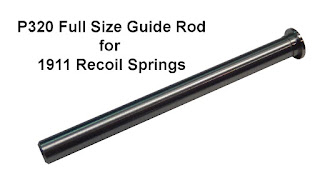I have been trying to get my AR10 chambered in 308 to cycle reliably for a few years now. Keep in mind that I have been working on this is my spare time and weather permitting. Additionally it has not been a high priority since I hunt with the 6.8SPC and use the 5.56mm for competition and coyote hunting. OK off topic crap done, now to the details in case you found this article desperately searching for a solution and got tired of wading through crap in the forums and youtube videos that NEVER seem to stay on topic.
MY SETUP
I built this billet AR10 upper and lower receiver using DPMS parts kit, DPMS BCG and a Bear Creek Arsenal 16" 1-10 twist barrel with mid-length gas system. Before you look at my pictures and think "Hey! That looks like an Armalite patterned upper and lower, why are you using DPMS parts?" This matched upper and lower is made by AES Weapons and they designed it to look like an Armalite pattern but use the more common DPMS parts. SIDE NOTE: if you were confused about Armalite vs DPMS, I just made it a bit worse for you.
Since I am going to be shooting this primarily suppressed, I installed an adjustable gas block so I could reduce the amount of gas cycling the BCG. Suppressors increase the gas pressure and can induce feeding and ejection problems, as well have potentially damage parts or premature wear on parts.
THE PROBLEM
So what I was running into was failures to feed/eject no matter what type of ammo I was using. Magazine type did not make a difference. When I removed the upper from the lower I could see where the black anodizing was gone and what appeared to be "dents" in and around the opening of the buffer tube. So I got my Dremel tool out and removed some of the material where this damage was occurring thinking there may be a design flaw in the lower. The issue still persisted... I even removed some material from the mouth of the buffer tube since it had gotten dented too. Still did not fix the problem.
Even with the gas block turned down, I figured it must be getting too much gas and the BCG is moving way to fast backwards and not giving the spent brass casing time to "shrink back down to size" for a smooth extraction. If the BCG starts rearward too fast before the gas pressure in the chamber has time to normalize, the brass casing is still swelled inside the chamber walls and can "stick" causing friction that impedes the extraction... inducing a failure. The typical solution for this is a heavier buffer like an H2, H3 or tungsten. The idea is to add weight to the BCG and slow it down giving time for the chamber pressure to normalize. Another solution is an increase power or heavier recoil spring. I tried both buffer and spring and the problem still occurred.
THE SOLUTION
After searching all over for an example of the damage I was seeing... and not finding it, I had two options. Replace this bad ass super tight upper and lower set or try an "enhanced" buffer tube that I occasionally saw on the internet but the reviews and marketing hype never mentioned the damage I was seeing. I was prepared to dump another $50 for a stupid buffer tube if it fixed the problem but was happy to find the Aero Precision Enhanced Buffer Tube cheaper for about $33 at Primary Arms. So I opened the wallet and spent more money. My next trip to the range was a success! I ran the same ammo that never ran 100% in this rifle and all of it cycled perfectly.
HOW THE ENHANCED BUFFER TUBE WORKS
So if you look at the pictures, the enhanced buffer tube has an extended portion at the bottom called "Carrier Support Extensions". This extension to the novice like myself looks like a nice feature to help keep that buffer detent and spring from shooting across the room. However the real feature of that extended portion is to allow the rear portion of the BCG to rest on it and act as a guide into the buffer tube. Pretty much like how a shoe horn works on shoes.











